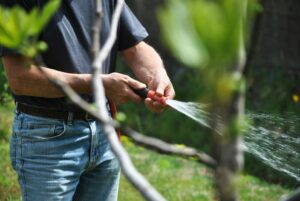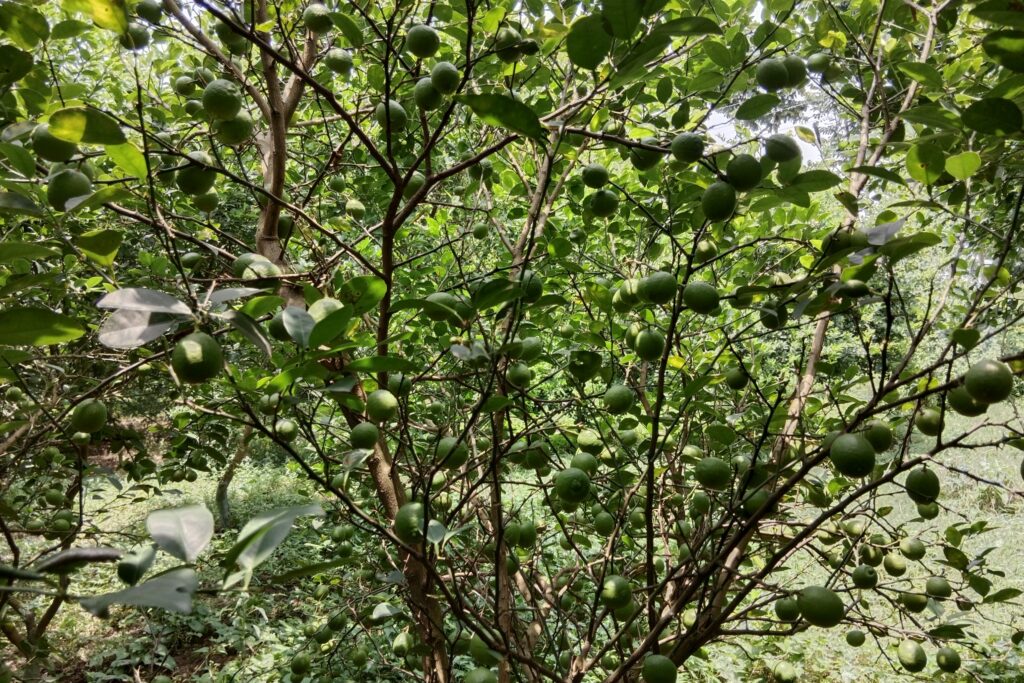Walking with bare feet all through a healthy, green lawn early in the morning offers a natural form of stress relief. The soft natural texture underfoot can stimulate pressure points, promoting relaxation and a sense of well-being.
Thick, healthy, green lawns require more than just time; they need balanced and timely nutrition for optimal beauty and performance. Lawns are subjected to play and walking activity. Using the best lawn fertilizer at the right time replenishes lost nutrients and prevents weeds and moss. Healthy lawns rely on water for growth, sunlight for energy, and oxygen for respiration. When natural soil processes fall short, fertilizers help sustain optimum turfgrass growth.
What is lawn fertilizer?
Lawn fertilizer is a product designed to supply essential nutrients to grass, promoting healthy growth and a lush, green appearance. The purpose of lawn fertilizer is to provide grass with vital nutrients so that it grows healthy. In order to attain desired lawn attributes and healthy turfgrass, fertilizing a lawn provides the required nutrients in the right amounts at the right times. Plant life depends on essential elements such as nitrogen, phosphorus, and potassium, with nitrogen being essential for robust, green development.
Before seeding, all new lawns should have fertilizer applied, and many also need lime. The best way to determine the specific needs for lime and fertilizer for a particular lawn is through soil testing. This ensures that the lawn receives the correct nutrients to promote healthy growth and development, leading to a thriving, green landscape.
A well-maintained lawn is an important asset for homeowners, the community, and the environment. Lawns provide a safe place for children to play, increase home market value by up to 15%, have the cooling capacity of a typical home air conditioner, cleanse the air of dust and pollutants, reduce water runoff during intense rainstorms, and create a feeling of serenity. Fertilizer and lime recommendations are designed to be environmentally friendly, gradually building up phosphorus and potassium levels to optimum levels for good turf growth.
What does lawn fertilizer do?
A well-manured lawn not only promotes faster, more uniform growth of grass, but also helps minimize weed growth, which in turn shortens the time it takes for grass to germinate. Creating a fertilizer treatment schedule for your lawn leads to thick and richly colored grass all over the place.
A lawn that has not been fertilized is dependent only on the nutrients that are currently in the soil, and even in similar soil types or climates, these nutrients might differ significantly. The nutrients in the soil may have been reduced during the construction of your house or as a result of poor lawn maintenance by a previous owner.
The three main components found in fertilizers are nitrogen (N), phosphorus (P), and potassium (K), or N-P-K for short. Fertilizers give grass the necessary nutrition it needs to grow thick and healthy.
Four Best Lawn Fertilizers
It is beneficial to do a soil test since it may show any nutritional shortages in the lawn that need to be addressed with fertilizer. Apply fertilizer only at the recommended rates indicated on the package. Overfertilization can burn the grass, turning it brown or yellow, and increase the lawn’s vulnerability to diseases and pests.
There is more to maintaining a lawn than merely mowing, thatching, and aerating it. Being a heavy feeder, turfgrass needs consistent moisture to maintain its finest appearance. Basic macro- and micronutrients are beneficial to all plants. Particularly grass requires additional macronutrients from the air and water, but these are taken up so quickly that additional applications are required.
You can use manure that you make yourself or buy several kinds of lawn fertilizer from the store to make your grass look more vibrant. The finest fertilizer for your lawn can be selected with the assistance of your soil type and fertilizer quantities.
Nitrogen (N)
Nitrogen is the key nutrient for maintaining a quality lawn, as it promotes foliar growth and color. Effective use of nitrogen involves four considerations: the type of nitrogen fertilizer to apply, the amount applied at any one time, the timing of the application, and the number of applications per season. Generally, two categories of nitrogen fertilizer are available: water-soluble and water-insoluble. Urea and ammonium sulfate are examples of water-soluble nitrogen fertilizers.
Water-soluble fertilizers dissolve completely in water and quickly move to the grass’s root zone, where the nitrogen is rapidly absorbed by the plants. This results in a quick greening of the turf and a growth spurt that lasts 3-4 weeks. On the other hand, water-insoluble fertilizers release nitrogen slowly over time rather than all at once. This slow-release or timed-release nitrogen fertilizer takes longer to green up the grass, but the growth rate is more uniform, and the response to the fertilizer can be seen for eight weeks or more.
Avoid using turf fertilizers containing only water-soluble nitrogen. While these fertilizers are inexpensive due to low manufacturing costs, they cause excessive and relatively short-term growth and temporarily load the soil with nitrate-nitrogen. Heavy rains can cause nitrate-nitrogen to leach from coarse-textured soil, potentially reaching groundwater. Using slow-release nitrogen minimizes groundwater contamination. Nitrogen is essential for new grass growth and healthy green growth. If the grass is yellowing or pale, this indicates low nitrogen levels, leading to poor grass quality. However, be cautious when applying too much nitrogen to achieve a greener lawn, as excess nitrogen in the soil can cause long-term issues. Nitrogen is responsible for rapid growth, helps synthesize proteins, and increases leaf development for dense lawns.
Phosphorus (P)
Phosphorus plays a key role in developing and encouraging a strong grass root system making the lawn more resilient year-round, especially during dry weather. Early root growth is enhanced, promoting plant maturity and aiding in seed development.
Potassium (K)
The application of Potash to your lawn enhances grass durability and improves hydration. Moreover, it also helps the lawn better withstand drought and disease, resulting in a stronger, healthier lawn. They enable the grass to resist drought and disease more effectively.
Compost
Top-dressing the grass with a small layer of homemade or store-bought organic compost can enhance the fertility, structure, and health of the soil. Before applying organic matter fertilizer, it is best to aerate the lawn and then rake or brush the compost onto the surface.
It can be advantageous to include compost in your lawn maintenance regimen. In the spring, aerate and scarify the lawn. Then, as the grass starts to grow aggressively, use a slow-release fertilizer to supply nutrients.
Regarding the dose of compost, please follow the instructions given in the compost package.
Watering the Lawn

Watering after fertilizing is essential—if no rain is expected, you may need to use a hose and water by hand. Thoroughly water the lawn to dissolve the granules and promote nutrient absorption by the roots. This also helps reduce the risk of fertilizer burn on the grass blades.
Lime – Guideline for Using Lime in Lawn
The level of acidity of the soil increases with decreasing pH. Lime the soil to counteract some of its acidity if the pH is found to be too low for high-quality lawn.
Lime application is recommended only if the pH is extremely low. Generally, turf will grow well even if the soil pH is high, so no treatment is recommended to lower the soil pH. The ideal time for liming lawns is during establishment, allowing a one-time application of the full recommended amount of lime and mixing it with the soil. This process greatly speeds up the lime’s reaction with soil acidity.
Use no more than 22 kg of lime per 1,000 square feet of lawn that has already been created at one time. Divide the amount into two or more applications that don’t go beyond the 22 kg rate if your soil test indicates using more. Applying lime too quickly could scorch the grass. If a soil test shows that lime is required, apply enough lime to raise the pH of the soil to 6.0 to 6.5. Till three to six inches down, work the lime into the soil. To ascertain the precise soil reactivity and the appropriate lime application amount, a soil test is necessary. Fertilizer is still required; lime cannot take its place.
When to Apply the Lawn Fertilizer?
The initial feeding of a lawn each year occurs in spring, and when done correctly, it provides the grass with a strong beginning to the new growing season.
Early Spring
For lush vegetation throughout the growing season, maintaining a healthy lawn with appropriate fertilization is essential. Early spring is when the fertilization cycle starts, right before grass starts to grow. Several criteria, including grass species, fertilizer content, and local environment, will determine how often and what kind of fertilizer is applied for the rest of the season.
Use a high-nitrogen fertilizer in the early spring; best applied between February and September. Nitrogen encourages rapid development, which is necessary to establish a thick, lush lawn. It is best to use a slow-release granular fertilizer in the spring, as it distributes nutrients gradually over a few months, giving your plants continuous nutrition. On the other hand, organic fertilizers provide a long-term, sustainable feeding solution that improves soil health and boosts overall grass vitality.
Consider adding a fast-release liquid fertilizer to your routine when spring gives way to summer. During times of active growth, this form of fertilizer provides rapid nutrient increases that are essential for keeping your grass healthy and vibrant. Frequent applications during the summer assist healthy roots and leaf development by maintaining ideal nutrition levels.
It is suggested to read the nutrient composition listed on the package when choosing fertilizers. A formula with a higher initial number is rich in nitrogen and is good for encouraging lush springtime foliage. Furthermore, phosphorus and potassium are essential for developing robust root systems and general plant hardiness.
How to Apply Lawn Fertilizer?
Lawn fertilizer can be applied in a variety of methods. When fertilizing, a spreader offers a more uniform application than manual labor. Hand fertilizing frequently leaves pale patches with insufficient fertilizer and burns where the fertilizer is concentrated. Spreaders that are rotary or broadcast are simple to use and do not result in stripping, unlike drop spreaders. One benefit of using drop spreaders is that fertilizer cannot be spilled onto roads, sidewalks, or streets.
Using a drop spreader requires two right-angled passes across the grass. For instance, the second trip across the lawn should go east to west if the first one was made in a north-south orientation. Thoroughly water the lawn following the fertilizer application. In addition to allowing the fertilizer to seep into the soil so it may begin working, watering also washes it off the grass blades to prevent burning.
During a drought
Extreme droughts will cause lawns to lie dormant, so it’s advisable to wait for rainfall before fertilizing your lawn because fertilizers are most effective while the grass is actively developing.


